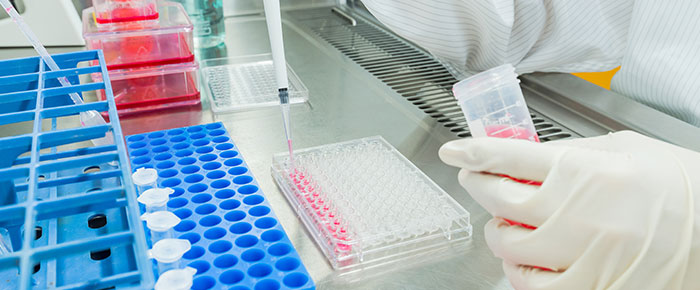
Growth and proliferation assays are some of the most widely used measurements across biological research labs. Nearly every lab, whether they’re working with E. coli, yeast, cancer cells, or stem cells, relies on these assays to determine normal (or abnormal) cellular characteristics. As with any laboratory workflow, it’s essential to consider how samples and reagents will be identified so that assays are performed as accurately and error-free as possible.
Growth and proliferation assays are performed optically
The main thing to remember when identifying samples for growth and proliferation assays is that most of these assays are performed optically. That is, they require a direct line of sight from the reader through either a cuvette, tube, or microplate to obtain a signal over time. Therefore, label placement is key when performing these assays. For tubes and vials, it’s important to label only the top of the tube, ideally using 2D barcodes. Human-readable text can often be too small, especially when handwritten; 2D barcodes represent an optimal strategy for these types of samples, as they easily fit on the top of small tubes and encode a relatively high amount of metadata. For microplates, 1D barcodes may be easier to utilize due to the slim shape of the plate. Remember, it’s always important to label the side of the plate itself and not the cover. This ensures no mistakes are made, as the cover can be accidentally switched with other plates, especially during long, high-volume experiments.
Reagent tracking
Almost all experimental preparation includes pouring and aliquoting reagents, and growth and proliferation assays are no different. Common solutions like MTT and resazurin need to be dissolved and can be stored in freezing temperatures for extended periods for future use. Here, cryogenic barcode labels are recommended, ideally with an inventory management system or a laboratory information management system (LIMS), to track the location, number of aliquots, and the remaining volume.
Long-term analysis
Some newer systems utilize real-time live-cell quantitative imaging, such as the Sartorius Incucyte® live cell analyzer and ECHO’s CELLCYTE X™. These systems act as cell incubators, with instruments implanted into the machine to read and analyze cell growth and proliferation in real time. For these systems, it’s essential to consider that in order to maintain a sterile environment, all cell plates and dishes, as well as other labware such as tip boxes and pipettes, may come into contact with alcohols. Similar to other sterile environments, it is recommended to use labels that are resistant to these chemicals and to consider whether autoclave-resistant labels may also be required prior to sample preparation. As with other optical measurements of growth and proliferation, ensure that the labels do not cover the top of the plate or obscure the analyzer’s ability to scan the cells. This is particularly true with systems like the Incucyte that can also take live images and videos of your cells while in the incubator. As such, labels should never be placed on the top of cell culture flasks, dishes, or plates.
Barcodes or RFID?
RFID represents another means of efficiently tracking samples. Its main advantages include the ability to scan multiple samples at once without requiring a direct line-of-sight. RFID labels can also provide a two-tiered identification system, as barcodes can be printed simultaneously on the facestock of these labels. Now that RFID can be incorporated into almost any type of label, it has become one of the go-to methods of identification for many commercial and academic labs, affording an easy-to-use system of tracking and tracing all samples and inventory across multiple workflows.
Note that it’s important to test any system, especially RFID, before implementing it wholesale for your assays. Several potential points that require verification include using RFID labels with systems like Incucyte, CELLCYTE X, and the xCELLIGENCE real-time cell analyzer. xCELLIGENCE is based on the measurement of electrical impetus through special microplates; it senses the area taken up by cells as they grow and converts them into data points in real time. For all these specialized analyzers, it’s necessary to verify the readability of RFID labels, as the metal framework of the incubator combined with other mechanical parts and signals may interfere with their ability to be read. It’s also essential to ensure that the RFID component doesn’t interfere with the analyzer’s functionality.
LabTAG by GA International is a leading manufacturer of high-performance specialty labels and a supplier of identification solutions used in research and medical labs as well as healthcare institutions.



